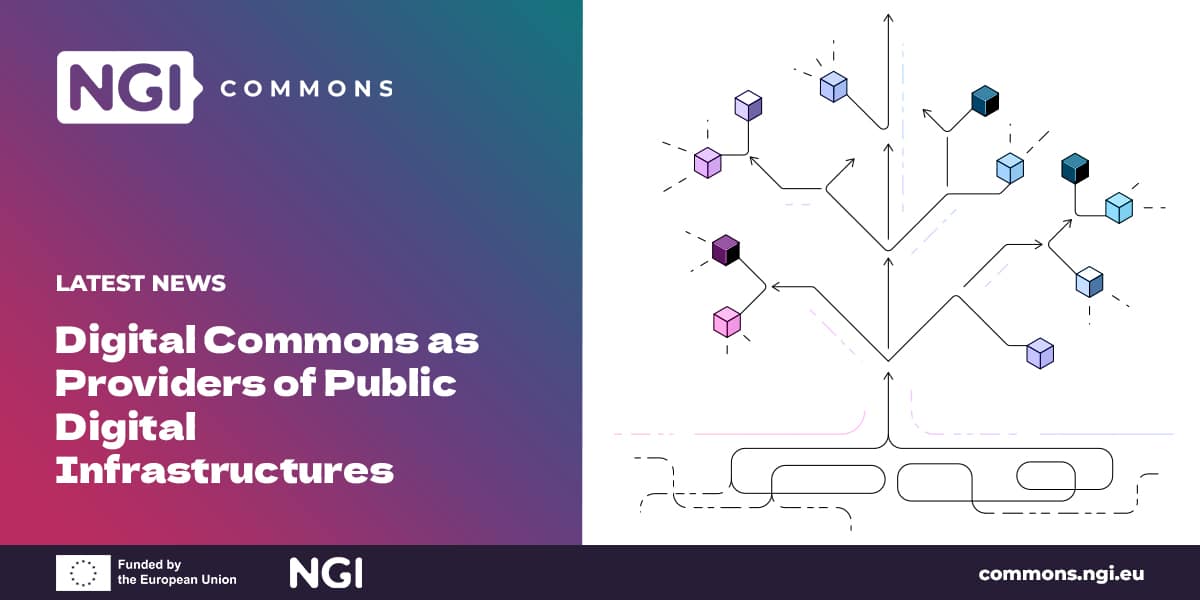The concept of the Digital Commons describes a wide array of digital systems and solutions that are owned, developed, and maintained by groups rather than by single individuals or entities. Unlike businesses or state institutions, these groups coordinate not through pricing or subordination but through peer collaboration. While many Digital Commons projects began as small community efforts, numerous initiatives have since scaled to become essential societal infrastructures, attracting vast contributor bases and supporting global applications. Early 21st-century examples include Wikipedia, the online encyclopedia, and Apache, open-source software that supports over 20% of the busiest websites worldwide. Some authors have even described the current Internet Stack as an “accidental megastructure” of Digital Commons.
At the same time, strengthening Europe’s digital infrastructure and sovereignty has gained importance in discussions about Europe’s future and competitiveness. This topic is highlighted, for instance, in the European Commission’s White Paper on Europe’s digital infrastructure needs and in Mario Draghi’s report on the Future of European Competitiveness.
In this context, the paper presents a comprehensive review of foundational literature on infrastructure and current global debates and typologies of public digital infrastructures. Although free-market policies of the 1990s led to a private and platform-driven digital landscape, there is a growing interest worldwide in developing public infrastructures within this field. New policy debates for instance position the state as an “entrepreneurial state,” promoting openness and “generative interoperability.” Foundations for digital services and transactions, critical internet stack components, public spaces, and shared production platforms are increasingly seen as essential to economic and social well-being.
Policymakers are proposing various forms of public ownership to maintain the public character and societal benefits of these infrastructures, often incorporating Digital Commons. Through five case studies, this paper examines strategies to address infrastructure gaps and explores how Digital Commons can sustain and enhance these new forms of public digital infrastructure while ensuring that they are inclusive, open, and interoperable.
- The ZenDiS and scikit-learn cases illustrate ecosystem strategies aimed at strengthening open source software connecting information systems and devices.
- OSPOs for Digital Commons governance, and the case of Germany’s Zentrum Digitale Souveränität (ZenDiS) which will be actively working to bridge the gap between developer communities and government by helping to provide open source solutions for the public sector.
- Decidim, created by the city of Barcelona, showcases partnerships providing alternative spaces for online public speech and debate.
- DHIS2, used by many governments for health information management, exemplifies collectively managed and produced digital infrastructures, facilitating resource and capacity mutualisation.
- Finally, the European Open Science Cloud (EOSC) is a unique example of a pan-European attempt to build a shared infrastructure with a community of researchers, not only redefining the tools and processes used by researchers, but also developing an infrastructure embedded in the values and principles of Open Science.
These case studies provide insights into the conditions necessary for Digital Commons to provide infrastructure, particularly regarding long-term funding, which communities struggle to secure. They also highlight the diverse relationships between public institutions and Digital Commons, impacting Digital Commons’ governance.
Digital Commons as Providers of Public Digital Infrastructures
The case studies are contributions written by the following co-authors: Nil Homedes Busquets (case study on Decidim), Nicholas Gates (case study on ZenDiS), Lea Gimpel (case study on DHIS2), Cailean Osborne (case study on scikit-learn), Roksana Wilk (case study on EOSC).
The authors would like to thank Ramya Chandrasekhar, Valerian Guillier, Paul Keller, Riccardo Nanni, Mila Samdub and Alek Tarkowski for their valuable feedback and contributions to the publication.
This publication was funded by the European Union’s Horizon Europe programme and contributes to the NGI Commons initiative, which aims to formulate a sustainable strategy for Digital Commons that bolsters Europe’s sovereignty and trust in digital environments.

